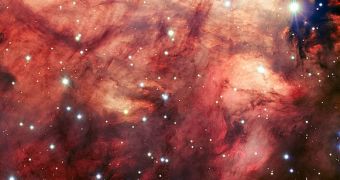Astrobiologists say that nebular clouds contain vast volumes of sugars, organic molecules that can be used to assemble the backbone of ribonucleic acid, a compound called ribose. From this perspective, nebulae are indeed the origins of life as we know it.
A theory called panspermia suggests that the Universe itself is coded to support life, in that it produces organic molecules that can become tremendously complex, and then seeds them all over the place.
As soon as these “seeds” find an appropriate home – such as a habitable planet – they catch roots, and immediately start to evolve. Some believe that this is how life began here on Earth as well.
If all this is true, then alien lifeforms may occupy all planets that meet conditions similar to Earth's. However, all of these organisms would evolve in their own, individual patterns, not necessarily similar to what happened here.
According to expert, RNA coding is what ultimately allowed primitive, cell-like structures to become alive, by acting like a catalyst. Under this scenario, the chemical combinations occurring inside the oldest molecular clouds would have had more than 10 billion years to develop.
The result may be us, self-replicating organisms with DNA genomes. At the same time, it's also important to remember that we may not be the first instance when this has happened, and also that Earth may not be the first world where such lifeforms sprang up, either.
Spectrometric analyses of nebular clouds revealed the presence of chemicals such as hydrogen, carbon, oxygen, nitrogen, and cyanide, all of which can form proteins, nucleobases such as adenine, and DNA, Daily Galaxy reports.
The most interesting thing to note here is that all of this may happen under the influence of polarized radiations, which occur naturally inside nebulae. These structures are also where new stars are assembled, out of collapsing hydrogen clouds that implode under their own weight.
“We know that complex chemistry builds prebiotic molecules in such clouds long before the stars and planets are formed. There is a chance that some of these interstellar molecules may find their way to the surface of young planets such as the early Earth, and provide a head start for the chemistry of life,” says Anthony Remijan.
“For the first time, we now have the capability to make a very thorough and methodical search to find all the chemicals in the clouds,” concludes the expert, who is based at the US National Radio Astronomy Observatory (NRAO).

 14 DAY TRIAL //
14 DAY TRIAL //